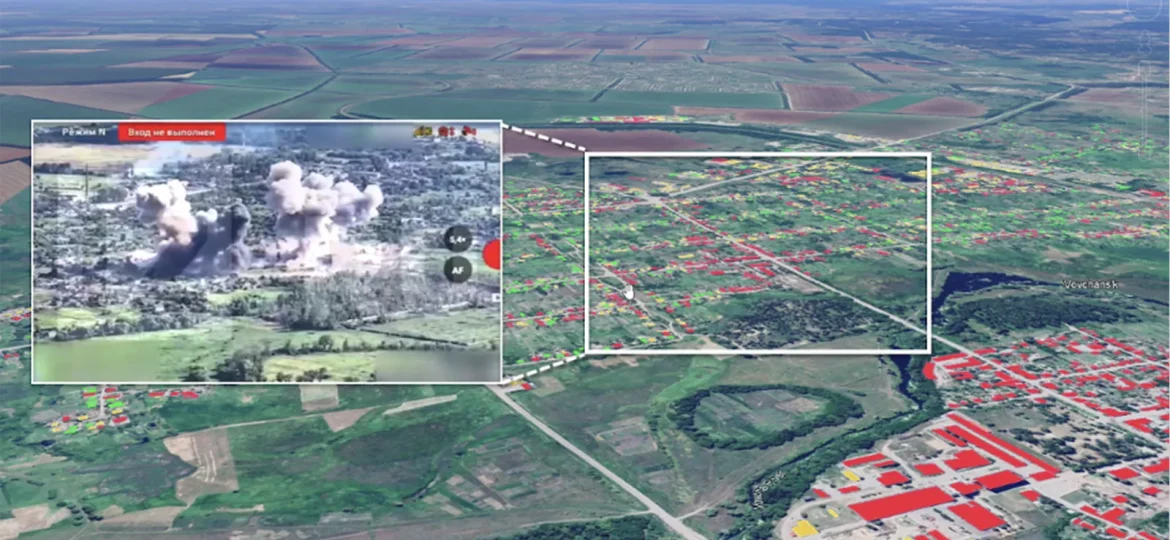
The Ukrainian town of Vovchansk, once a thriving community with schools, factories, and cultural landmarks, has been nearly obliterated in the ongoing war with Russia. Located just five kilometres from the Russian border, Vovchansk had a population of 17,000 before intense bombardment and fighting began in 2022. In May 2024, as Russian forces advanced, residents were forced to flee under heavy fire. Satellite imagery reveals that 60% of the town’s buildings have been destroyed, with further damage to 18% of structures, leaving only 22% undamaged as of late September.
The destruction accelerated after Russia’s offensive in May 2024, with the use of precision-guided weapons, including glide bombs and thermobaric bombs. Vovchansk’s city center has been flattened, and most infrastructure, including schools, factories, and religious sites, has been wiped out. The north, where most fighting took place, is virtually uninhabitable, there are some pockets of intact housing in the southern region.
Residents, many of whom spoke Russian and had familial ties to Russia, recount the terror of constant shelling and the devastation of their homes. Many have lost loved ones, and some have lost people to battle. Other residents narrowly escaped the destruction on foot. The stories of Vovchansk’s destruction are further captured in videos and satellite footage, showing a desolate landscape.
The situation remains volatile, with ongoing fighting between Ukrainian and Russian forces, and the town remains under the control of Ukraine, though much of it is unrecognizable. Refugees from the area express uncertainty about the future, with many unsure of whether they can ever return, given the proximity to the Russian border and the scale of the destruction.
The investigation into the destruction of Vovchansk was a collaborative effort between Bellingcat and Agence France-Presse (AFP), who employed multiple investigative tactics. Bellingcat used satellite imagery to create a detailed damage assessment. First-hand accounts were also utilized, along with videos from drones and social media users. AFP reporters visited Kharkiv, where many refugees sought safety to obtain these first-hand accounts.
To read these stories and see the footage of the atrocities, read the full report.